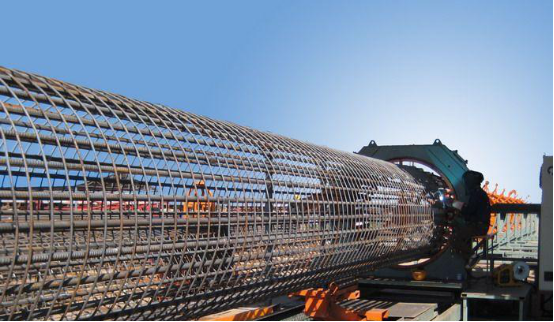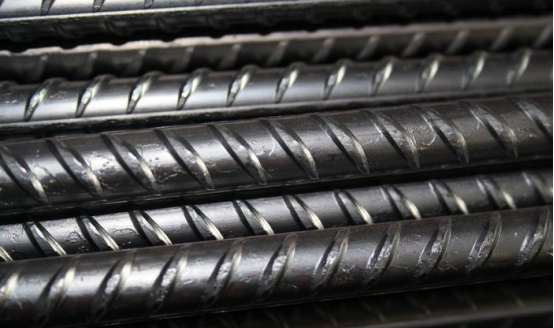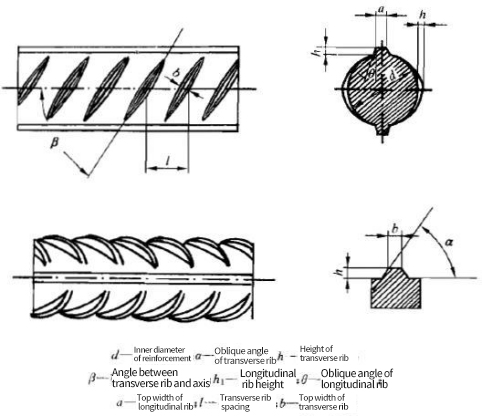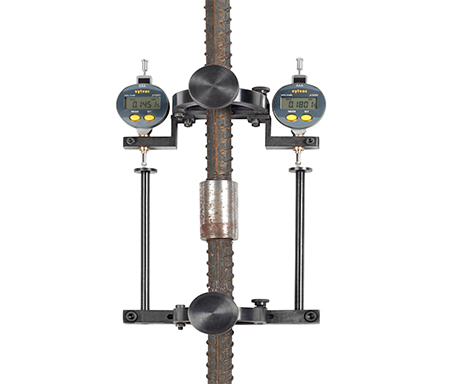
 02-26-2021 |
02-26-2021 |  Hits:915
Hits:915
The current housing construction and civil engineering in our country are mainly reinforced concrete structure, and the quality of rebar, as one of the main raw materials of the structure, will directly affect the quality of engineering construction, which is related to public safety and personal property safety. From public facilities such as expressways, railways, bridges, culverts, tunnels, flood control and dams to foundations, beams, columns, walls and slabs of housing construction, rebar is an indispensable structural material. According to statistics, in recent years, the output of rebar in China accounts for more than one fifth of the total output of steel in China. It is a product with large usage and wide range of application. Therefore, rebar plays an important role in China's metallurgical industry and national economy in terms of both the number of enterprises and the output of products.

一、 What is rebar
Rebar is a kind of steel bar with surface rib. Also known as hot-rolled ribbed bar, it usually has two longitudinal ribs and transverse ribs uniformly distributed along the length direction. The shape of transverse rib is spiral, herringbone and crescent. Hot rolled ribbed bars for reinforced concrete in China consist of hirb and the minimum yield point. H. R and B are the first letters of hot rolled, ribbed and bars respectively. According to the classification method of GB 1499.2 steel for reinforced concrete Part 2 hot rolled ribbed bars, hot rolled ribbed bars are divided into six grades: HRB335, HRB400, HRB500, hrb335e, hrb400e and hrb500e.

二、 Classification of rebar
There are three common classification methods for rebar
1. Classification by geometry
According to the different cross-section shape and rib spacing, the rebar is classified or typed. For example, according to the British Standard (bs4449), the rebar is divided into type I and type II. This kind of classification mainly reflects the gripping property of rebar.

2. Classification by performance
For example, China's current executive standard GB 1499.2 divides the rebar into three grades according to the strength grade (yield point / tensile strength); Japan's industrial standard (jisg3112) divides the rebar into five categories according to the comprehensive performance; British Standard (bs4461) also stipulates several grades for the performance test of rebar.
3. Classification by use
According to the classification of application, rebar can be divided into ordinary rebar for reinforced concrete and heat-treated rebar for prestressed reinforced concrete.
三、 Inspection of mechanical properties of rebar
Rebar is mainly used for the skeleton of reinforced concrete building components, which requires certain welding performance, mechanical strength and bending deformation performance. The raw material for the production of rebar is carbon structural steel or low alloy structural steel, which is treated by sedation melting. It mainly bears tensile stress in concrete. Due to the role of rib, the rebar has greater bonding ability with concrete, so it can better bear the role of external force. However, in order to save production cost, raw materials are not up to standard, and the strength of rebar is not up to standard, even causing serious construction accidents.

On December 31, 2014, the Ministry of housing and urban rural development of China issued the announcement of the national standard "code for acceptance of construction quality of concrete structures", and approved the "code for acceptance of construction quality of concrete structures" as the national standard. Among them, articles 4.1.2, 5.2.1, 5.2.3, 5.5.1, 6.2.1, 6.3.1, 6.4.2, 7.2.1 and 7.4.1 are mandatory and must be strictly implemented. According to Article 5.2.1 of code for acceptance of construction quality of concrete structure engineering, when steel bars enter the site, test pieces shall be selected for mechanical properties and weight deviation inspection according to the provisions of current relevant national standards. The inspection results must comply with the provisions of relevant national standards, and the inspection quantity shall be determined according to the incoming batch and the sampling inspection scheme of products. The inspection methods include product qualification certificate, factory inspection report and re inspection report.